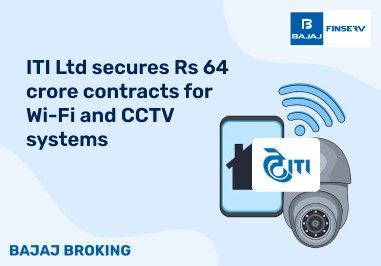The Association of Mutual Funds in India (AMFI) has data that is a testament to the growth the mutual fund industry in India has experienced in the past 10 years. From ₹10.06 trillion in 2014 to ₹64.97 trillion in 2024. With the expansion of this industry, investors can choose to either hold their mutual fund units in Demat accounts or via Statement of Accounts (SoA).
To help you understand how these two differ, here is everything you need to about the statement of accounts.
What is Statement of Accounts(SOA)?
When investors invest in mutual funds, the company they are investing with provides them with a document called the Statement of Account. The SOA provides an outline for an investor's transactions and holdings. The statement is shared with the investor regularly, either in a physical format or electronically. And has all the records of the purchases, redemptions, dividends received, and the current value of the investments in the mutual funds, over time.
The SOA helps investors manage their mutual funds in a similar way that banking accounts are managed. Mutual fund units can be used to redeem or withdraw a specific number of mutual fund units.
What are Key Differences Between the Demat Account and the Statement of Accounts
To further help you understand the basic differences between the SOA and the Demat account, here is a list:
Aspects
| Demat Account
| Statement of Account (SOA)
|
Issuance
| Demat accounts are managed by DPs like CDSL and NSDL
| The SOA is issued either quarterly or annually by the specific Asset Management Company
|
Charges
| Can charge account opening fees, annual maintenance charges and transaction fees
| SOA rarely comes with any additional charges attached.
|
Asset Holding
| The Demat account can hold several types of assets from shares and bonds to ETFs and mutual funds
| SOA only applies to mutual funds
|
Content
| The Demat account holds everything under one umbrella in electronic form
| The SOA consists of the investor's name, transaction history, folio number and overall valuation
|
Accessibility
| Traders can easily access their Demat account electronically
| Shared via post at the registered address. Investors can also download the same from their AMC's website
|
Transactions
| Transactions can easily be carried out online
| Needs manual handling to carry out transactions
|
Redemption
| Units can only be sold as a whole In
| Investors can redeem units by specifying the amount in rupees
|
Suitability
| Demat accounts work best for active investors who appreciate seamless online transactions
| SOA works best for investors who either do not like to trade frequently those who prefer physical records
|
Ease of Transfer
| With the help of a single nomination, you can cover all assets and make the process easier to transfer
| In SOA investors need to carry out nominations and transfers individually for each AMC
|
Loan Facility
| Loans taken against MF units can be utilized to buy more securities
| Here loans can be utilized for any purpose
|
Security
| Demat accounts come with high-security provisions and minimal risk of physical loss or theft
| SOA in physical form is susceptible to loss or damage this is what makes electronic SoAs more secure.
|
Why Both Are Important for Investors?
With the help of the SOA, investors can experience more cost-effectiveness. Apart from this it also provides more flexibility where the withdrawal of money is concerned. The Demat account on the other hand helps investors keep track of their investments in real time. The Demat account also helps make it easier to transfer assets.
Conclusion
Investors have two options that will help them hold mutual fund units; a Statement of Account (SOA) and a Demat account.
To decide which method works best for you, it is important to know the difference between the two. Before finalizing a method, research both these options and choose the one that aligns with your financial goals.
Disclaimer: Investments in the securities market are subject to market risk, read all related documents carefully before investing.
This content is for educational purposes only. Securities quoted are exemplary and not recommendatory.
For All Disclaimers Click Here: https://bit.ly/3Tcsfuc

























